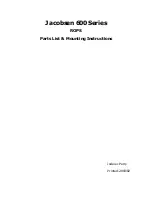
6 | Bases for measurement
KBM-110
14 / 32
B-H86.0.12.DB214-1.0
6.1.4 Further information
A pH electrode is a wear part. If the signal is very slow or the required values are no
longer observed after careful cleaning and possible regeneration, the electrode must
be replaced. When using the electrodes, be aware that various substances in aqueous
solutions can corrode glass and that chemicals can produce a chemical reaction with
the KCl solution in the electrode, which can result in blockage of the diaphragm.
– In solutions that contain proteins, such as for measurements in medical and biolo-
gical applications, KCl can cause denaturation of the protein.
– Coagulated paints
– Solutions that contain high concentrations of silver ions
Substances that accumulate on the glass membrane or the diaphragm affect the
measurement and must be removed regularly. This can be achieved for example with
automatic cleaning systems.
6.1.5 Choosing a pH electrode
The GE 114 WD or GE 100 can be used for most applications. However, some areas
of application require special electrodes.
– GE 100 BNC is a universal electrode with two ceramic diaphragms and liquid elec-
trolyte.
– GE 101 BNC is preferably used for small sample amounts. It comprises a glass
electrode with two ceramic diaphragms and liquid electrolyte.
– GE 104 BNC is preferably used for measurements in low-ionic media, such as
rainwater, aquarium water and deionised water.
– GE 114 WD is a universally applicable, durable and low-maintenance gel elec-
trode with Pellon diaphragm. It can be used for measurements in drinking water,
swimming pools, aquaria and slightly contaminated waste water.
– GE 117 BNC is a temperature-compensated gel electrode with two ceramic dia-
phragms and PH 13.5 cable screw coupling.
– GE 120 BNC is an insertion electrode and is preferably used for measurements in
cheese, fruit and meat. For measurements in products containing proteins, the
electrode must be cleaned with a special cleaner. For this purpose, we recom-
mend the GRL 100 pepsin cleaning solution.
– GE 125 BNC is a waterproof, universally applicable, durable and low-maintenance
gel electrode with ceramic diaphragm. It can be immersed above the shaft for an
extended time.
– GE 151 BNC is a glass electrode and is preferably used in galvanic applications
for paints and lacquers.
– GE 173 BNC is an alkaline-resistant glass electrode with ground diaphragm and
gel electrolyte for chemical and waste water applications.
6.1.6 Service life
The service life of electrodes is normally at least 8 to 10 months. When cared for prop-
erly, this can usually increase to more than 2 years. The actual life will vary depending
on the particular application.















































